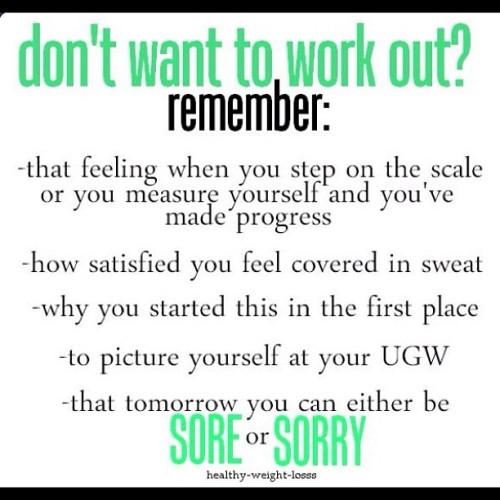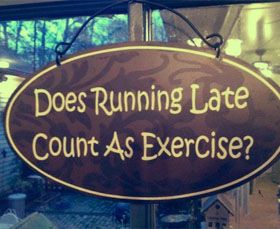Health & Fitness Exercise Forum Biography
Source Google.com.pk
When it comes to weight training and achieving optimal results from your workouts and ultimately your long term goals, there are numerous key factors which have to be considered and put in place for this to occur. Most of these factors revolve around your actual training itself, such as exercise selection, repetitions, sets and rest intervals during exercise bouts. Emphasis on each of these factors will alter accordingly depending on whether your desired outcome is based around strength and power, hypertrophy or muscular endurance. All these factors have previously been considered in our article archive and can be found within the FitnessBeans website.
The purpose of this particular article is to consider optimal rest periods required away from the gym following an intense workout. Rest periods themselves can be considered just as, if not more, important as the actual workouts themselves. Too much rest and the required stresses and strains needed to bring about adaptive muscular alterations will simply not occur. Too little rest and your training and ability to undertake exercise will ultimately suffer; with performance decrements, over-training and illness and injury just a few commonly occurring resultant problems.
Aerobic Exercise
If you are an individual who likes to mix their resistance training with cardiovascular activity then you will be happy to know that the recovery periods for aerobic exercise are not nearly as long. In fact, due the nature of aerobic activity, which is a sustainable form of exercise and much less stressful on the body itself, you can participate in aerobic exercise daily.
Obviously, if this aerobic exercise takes the shape of training for a marathon then it is ideal to schedule rest days, but otherwise daily training is not problematic.
Resistance Exercise
Previous research has identified an optimal recovery period for muscle groups at between 24-48 hours depending on the type and intensity of the training undertaken. If an extremely strenuous and stressful workout has been achieved, then this might require even longer. The reason for this required delay is quite simply so the target muscles, that have achieved microfiber damage during the workout, can be given adequate time to undertake the necessary repair and growth processes required.
For those of you that think more is better when it comes to weight training, think again. As stated above, without adequate recovery time to muscle groups, ultimately you will do yourself more harm than good. Potentially, this might even include decrements in the strength and size of your muscles. Remember, your muscles can only grow during periods of rest!
So how do individuals undertake resistance training on a near daily basis and achieve phenomenal results? The answer is split training. Guidelines for optimal rest periods state that 24-48 hours rest is required for muscle groups. Therefore, as long as you focus on a different muscle group the following day, you are still achieving your required rest periods whilst training hard.
For example, if on Monday you undertake a chest session, then on Tuesday and Wednesday undertake a back and legs session respectively, by the time Thursday rolls around you will be able to train your chest again if required. This method of split training requires a lot of dedication and organization to achieve results and is not recommended for novices. Remember, even with split training you require complete rest days.
Be honest, how many of you perform stretches as part of your training regime? If you do, are you aware of which stretches to perform in order to make them most suitable and effective for your individual situation? If you answer yes to one or more of the above questions then here at FitnessBeans we’re already impressed! The truth is, the majority of individuals don’t stretch and if they do, then it’s often not as effective as it could be.
There are numerous variations when it comes to stretching; static, dynamic, ballistic and PNF to name but a few. This article is going to consider static stretching. This type of stretching, as the name suggests, involves holding a stretch for a specific time period. If done correctly, static stretching can offer numerous benefits. Often however, it is misused and then receives a bad reputation and a Chinese whisper is born! This article aims to consider the benefits of static stretching.
Before moving on it is important to clear up a dispelled rumour. Static stretching does not prevent injury and in some cases it can actually inhibit sporting performance if used as part of a pre exercise regime and as a result other stretch variations should be considered here. Pre workout aside, static stretching can offer numerous benefits and gains;
The Benefits Of Static Stretching
Assists Sedentary Individuals:
If you’ve retired from exercise or simply don’t perform any physical activity for whatever reason, then static stretching can assist in allowing you to maintain a good range of motion. Flexibility is useful for posture and correcting any muscular imbalances throughout the body. Static stretching also places little demand on the body.
Enhances Relaxation:
The act of performing static stretching means that everything else in your life has to wait for a moment or two. This environment is conducive to a feeling of relaxation. Furthermore, the stretches themselves are also an additional means of ridding the body of stresses and strains. Ensure each stretch is maintained for a minimum of 10 seconds.
Post Workout Activity:
As mentioned previously, static stretching is not beneficial as a pre workout tool. It is however beneficial following an intense workout. Static stretching at this stage assists the target muscle in returning to its normal length and prevents it from remaining in a shortened position. Your muscles and body really will appreciate this stretching.
So there you have three beneficial reasons why static stretching shouldn’t be overlooked or omitted. If you’re a sedentary individual then static stretching can aid range of motion whilst providing an opportunity to relax. Conversely, for those active individuals amongst us, why not utilise this stretching technique following an intense workout to enable muscle length management.
Final Word
Before signing off, it’s important to reiterate that static stretching is not beneficial as a pre workout build up and in some cases might even diminish your ability to perform. As long as you understand the benefits of static stretching whilst at the same time acknowledging its limitations, then you won’t go too far wrong.










No comments:
Post a Comment